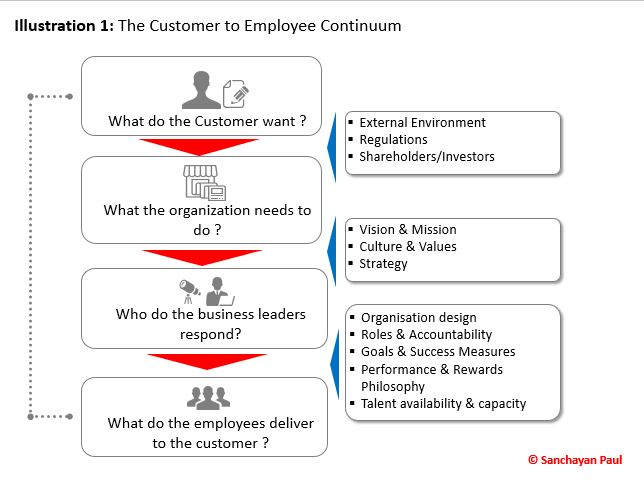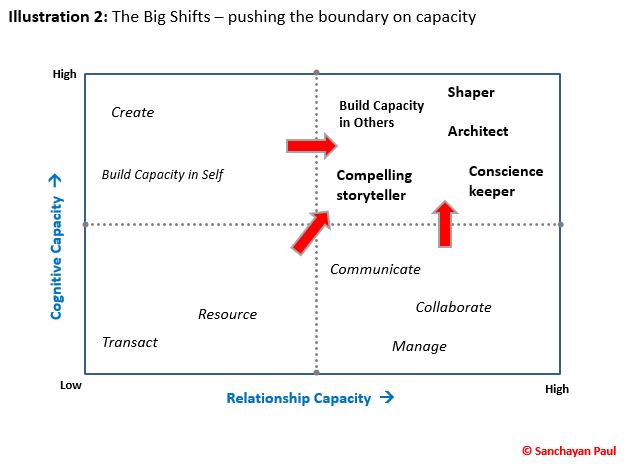What's next for HR Business Partnering?

Nearly 20 years after Dave Ulrich introduced the 3 block HR operating model (shared services, centers of excellence and HR business partners), while industry opinion indicates that capabilities continue to improve, most organizations believe that HRBP’s role as a true strategic partner has yet to be fully realized. While three out of four CHROs expect their HRBPs to be strategic partners to the line, less than one-fifth of line leaders say that’s happening, according to a CEB Research.
The evolution of technology, the emergence of a globally mobile workforce and shifting societal, political and regulatory paradigms are further impacting businesses fundamentally and thus HR partnering as its subset. HR’s success is getting defined by its ability to operate as an integral part of the business, bringing to focus the concept of being a partner.
The word ‘partner’ comes from the word ‘part’. Hence, partners are part of something, in a relationship sharing a common life or set of objectives. Being outside is just ruled out! Yet, as one becomes part of something, does one have to lose one’s individual viewpoint and vision? Aren’t great relationships based on the candidness of being a mirror to each other and acting as the conscience?
Let’s briefly articulate the big changes in the business world around us to better appreciate what’s next for HR Business Partnering.
The Big Changes
Macro & Micro-Economics
The growing global middle-class and the rise of Tier II & III towns combined with the multi-generational consumers and workforce is changing who is consuming what and where. From baby boomers to the ‘newly-minted’ Gen Z, understanding customer and employee expectations is becoming a key business driver.
Technology & Ideology. Digital ways of doing things in personal and professional lives and ubiquitous connectivity are empowering and enabling people across generations and geographies, while attitude changes in the buyers and the demand of customization are increasing the ‘Power of the One’, changing how products and services are consumed.
What is business asking for?
Business partnering is not a job title, but it defines the skills, knowledge and attitudes of the individuals. From the customer to the organization to its employees, businesses are looking for professionals who understand and deliver for success in the continuum from customers to employees.

Most business leaders are looking for professionals who can:
- Comprehend the business drivers and are able to set up mechanisms that drive business performance through people;
- Appreciate the end consumer and build a culture that reflects customer expectations and turns them into employee action;
- Act as a sounding board and have their ears to the ground enabling them to be the representative of the Voice of the Employee (VoE);
- Link talent dynamics and resultant analytics to diagnose the strengths and weakness of the organization;
- Predict the kind of talent needed and hence advice on mid to long-term talent imperatives.
To deliver to the above expectations, what are the big shifts required? What will set apart the HRBPs of the future?

The 6 big shifts
Shaping vs. Transacting
Business partners need to be architects of the organization’s success by being commercially-driven professionals who can define the organizational needs in the continuum from customer needs to internal structures to organizational success. To do that, strategic thought-leadership above practitioner level and the ability to influence the dialogue on the table is a must. To create space to do this, HRBPs must ensure that transactional people management tasks are contracted out to a shared-services unit that works directly to service the employees and people managers, including the senior management.
Transferring capability vs. Solving the problem
To ensure that HRBPs avoid getting drawn into transactions and solving every people related matter, it’s imperative to build people managers’ capability to handle routine people concerns, manage difficult conversations and be culture champions. Ability to train, mentor and coach people managers based on their need is a key skill that HRBPs will need to have.
Special skills & varied role playing vs. Specialists
In a VUCA world, organizations are living through phases of regular and frequent changes that range from small and immediate, to large and long term in scale and impact. Hence, change management skills are a key ingredient in any HRBP’s repertoire. In fact, in a continuously shifting business environment, business leaders are seeking professionals with special skills and not specialists in Talent, Employee Relations or Engagement. Here are some special skills and set of role playing, which will enable successful business partnering:
- Heightened awareness of cultural nuances, appreciating and leveraging diversity, navigating through political dynamics and a global mind-set.
- Translating the business leaders’ vision to the employee constituents and telling a compelling story about the company’s current business and future direction.
- External and internal media savviness to communicate the people narrative of the business.
- In-sighting from business and people data and analytics to draw-out solutions for business problems.
- Enable success for others by being a trainer of people mangers, mentor for budding talent and coach to senior managers.
In short, build ‘networks of expertise’, not become ‘centers of expertise’.
Relationship of equals vs. Hierarchies
Partnerships in any context are successful if the relationship is of equals. The base of building a relationship is about knowing each other well. And sometimes share mutual vulnerabilities! HRBPs must have the emotional intelligence to know when the relationship is ready and then make a “contract” of expectations and deliverables with the partner. It’s important to play back the partners needs and ask how one can help.
A genuine and strong partnership requires taking independent viewpoints and a clear-eyed, objective perspective on broader organizational objectives.
Conscious-keeper vs. Collaborator
The best predictor of success in complex roles is judgment. HRBPs need to exercise judgment and hold up the mirror to their partners and give advice on how things should look like for long-term success of the business. Hence, one must rethink and move beyond HR business partnering as a ‘service’ or as ‘designer of programs’ and reimagine themselves as ‘orchestrator of solutions’ and ‘consultants’. It is about being a trusted advisor and influencer for building credibility and trust. And for that, one must be comfortable being uncomfortable.
Talk talent vs. Managing resource supply
Finding the right talent for the business is often the number one reason why HRBPs are sought after, which implies that HRBPs have their necks deep in the “battle for talent” and the strategic, trusted advisor role in the “war for market share” takes a back seat. HRBPs should know their talent constituency well-enough to talk in-depth and with details, and lead regular talent reviews. They need to ensure people managers prepare evidence for performance, potential and have a succession plan ready. This helps have a supply chain view of talent and make buy or build plans ahead of the curve.
Knowing one’s talent constituency well will help HRBPs leverage ideas of relevant people in the business and funnel that to build a culture of innovation and improve productivity.
At the core, making these big shifts requires pushing up the capacity of cognition as well as relationships.
Re-constructing self and the surround system
The two other critical relationships that HRBPs must leverage are the expertise that the Centers of Expertise (CoEs) hold and the power of the CHRO’s position. Getting the most out of these blocks in the operating model will help HRBPs ensure all flanks are well covered as they take on the mantle of shaping their businesses for the future.
HRBPs continue to develop deeper commercial awareness and have invested in professional HR knowledge. However, it’s not about incremental changes or additional ways of doing things. The need is to bring increased focus on making the six big shifts.
CHROs will have to unlock barriers to enable these shifts by providing clarity of role, setting expectations, providing transactional support through shared services or outsourcing models and easing tensions among stakeholders that limit collaboration.
And yes, when one makes a shift, one moves out of something and moves into something new. That move will define what’s next for HRBPs and their ability to the make the whole greater than the sum of parts of their business.
(The opinions expressed in this article are the author's own and do not reflect the view of his employer)













